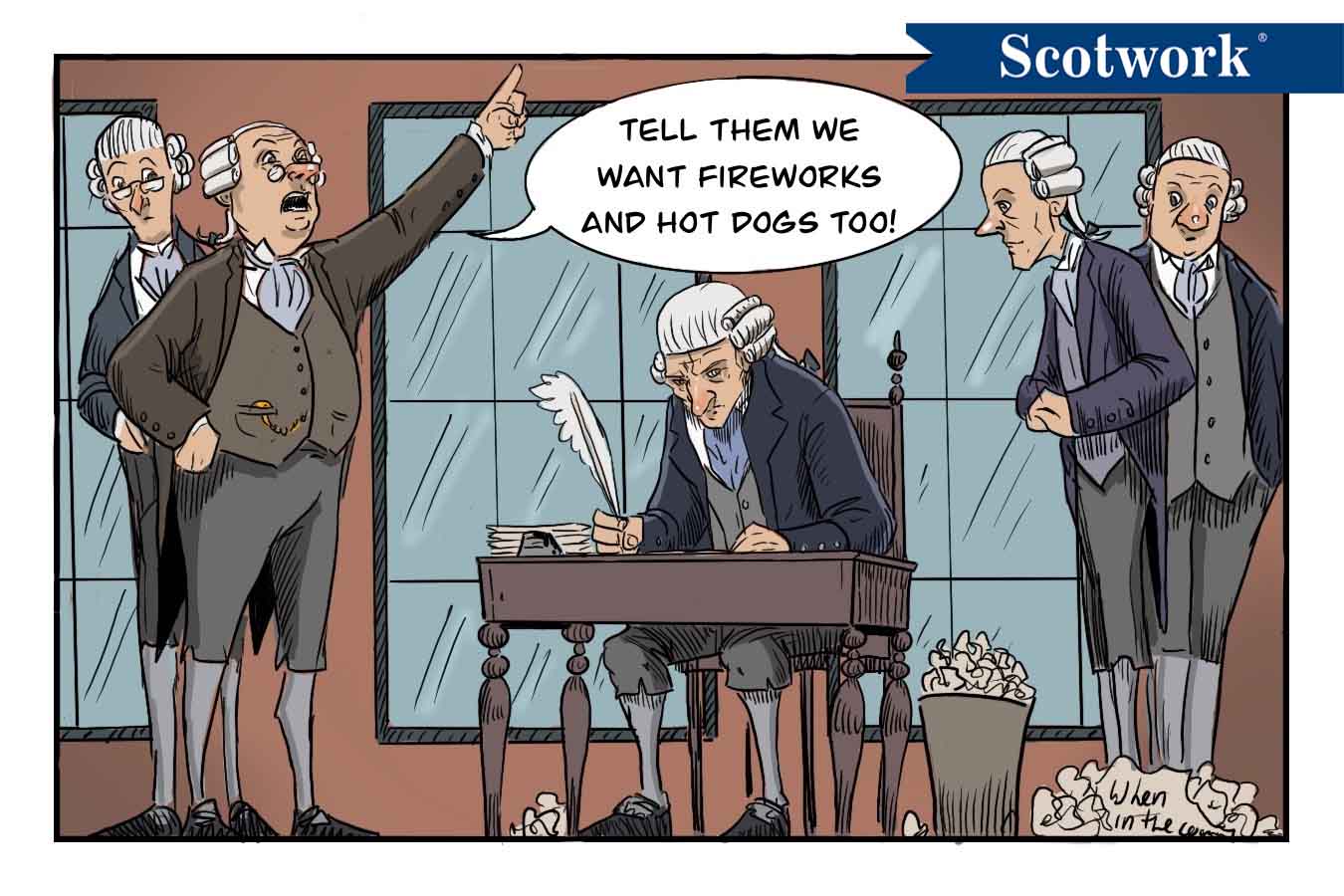Every 4th of July, we pull out the fireworks, grill some hot dogs, and maybe even throw on a red-white-and-blue T-shirt. But behind the celebration is a document that changed the course of history: the Declaration of Independence. It wasn’t just a breakup letter to the British Crown — it was a bold, argument-backed, crystal-clear position. It laid out key self-evident truths. It also held some key lessons every negotiator can use.
The American Revolution didn’t begin with the Declaration of Independence. The war was underway, with the Battles of Lexington and Concord and Bunker Hill having already occurred. Attempts at negotiation, like the Olive Branch Petition, had already been rejected by King George III. The Declaration reframed the conflict; it was a positioning statement if you will — one that led to the end of the war and the beginning of our independence.
To mark the occasion, I present a few self-evident truths about negotiation . . .
1. Preparation isn’t optional.
The Founders didn’t wing it. They knew what they wanted and why. Through weeks of debate with their key stakeholders, the 13 colonies, in the Continental Congress, they aligned on a shared objective and a defensible rationale.
Clarity is power. Knowing your goals, your limits, your fallback options, and what the other side likely wants isn’t a bonus — it’s the price of admission. Too often, negotiators walk in without clarity on what they want or, worse, without stakeholder alignment. That’s how bad deals happen.
Pro tip: When aligning internal stakeholders, don’t show up with a blank page. Instead, bring a draft of what you want to accomplish and how you’re going to do it. Then, ask for feedback, which will anchor your plan while inviting constructive input.
2. Structure expectations clearly.
The Declaration lays out 27 grievances clearly and without name-calling (well, mostly). It’s a master class in articulating issues (i.e., why they needed the situation to change). It was a blueprint for a desired future state.
Good negotiators clearly structure expectations so that the other side doesn’t misinterpret their needs, priorities, or constraints. This eliminates guessing and provides a foundation for meaningful dialogue and outcomes.
Pro tip: Identify what information will help the other side shape their view of what you need and then determine how you will share it. (Hint: Consider getting bad news out earlier rather than later.)
3. Limits matter.
The line between “I’m thinking about it” and “This is where we stand” is a powerful one. The Declaration conveys, “We’ve warned. We’ve appealed. We’ve tried.” And now? “We’re done.” That’s a limit, and it’s not ambiguous.
Limits protect you from accepting bad deals. Of course, setting them can be tough, especially when stakeholders are unclear or the little voice in your head creates doubt. But skilled negotiators push for clarity and define where the line really is.
Pro tip: Once you’ve set a limit, ask, “Under what circumstance would I move past this?” If the answer is “none,” that’s your limit. If not, keep refining until you reach it.
4. Proposals create momentum.
The Declaration didn’t just air grievances. It proposed a new reality: We are free and independent states. Without that, it would’ve been just a Declaration of Complaints with no clear path forward.
In a negotiation, it’s easy to get stuck in complaint mode where we just rehash problems and faults. Grievances should be aired, but at some point, the negotiation needs to move on. A proposal will move you forward and create momentum because it forces a choice and discussion.
Pro tip: If you find yourself complaining, ask what you’d need to make the issue go away and propose it. Proposals move conversations forward.
5. Agreement isn’t just a signature; it’s a commitment.
The final line of the Declaration is one of my favorites: “We mutually pledge to each other our Lives, our Fortunes, and our sacred Honor.” That’s not just a closing; it’s a coalition. It’s alignment. With that alignment comes resolve and a commitment to a shared future.
The real goal of any negotiation is a deal both sides can support. A “yes” that’s followed by resistance or sabotage is no win at all. Great negotiators build alignment before the close, not after. This is because implementing the deal is where ongoing trust will either grow or get destroyed.
Pro tip: Don’t wait to find out if the other side is on board. Do check-ins throughout. If there are issues, surface them before anyone walks away from the table.
One Last Sparkler
This Independence Day, I encourage you to go back and read the Declaration of Independence. When read from a negotiator’s perspective, it’s full of lessons. It’s a reminder of what the Founders were trying to avoid and what they were bold enough to imagine. In today’s world of partisanship and division, it’s worth remembering the courage, clarity, and alignment it took to lay the foundation to pursue our unalienable rights of life, liberty, and the pursuit of happiness. Happy Independence Day.
Life, Liberty, and the Pursuit of Fruitful Negotiations.
Scotwork’s negotiation training or consulting can help you pursue your unalienable rights at the negotiating table. Trust our 50 years of experience with your most important deals.

